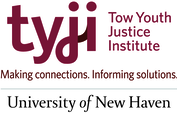Restorative practices acknowledge that when wrongdoing occurs; individuals and communities experience a sense of violation. The primary emphasis is on the harm caused to these connections,(relationships) Strong relationships contribute to more fostering communities where everyone can belong. Restorative Practices call for the restoration of broken relationships and involve a commitment to taking the necessary steps to rectify the inflicted harm. Strong and healthy relationships are also proactive in deterring the roots of harm by fostering understanding, empathy, and open communication. In communities where bonds are strong, members are more inclined to address conflicts collaboratively, minimizing the likelihood of harm. The foundation of trust within such relationships not only prevents harm but also cultivates a resilient and supportive community, where shared values and cooperation flourish.


Respect forms the foundational element that safeguards the framework for all restorative practices. It is critical that all members of the community engaging in the restorative practices are treated with dignity and equity; being valued as worthy and redeemable human beings. Engaging in Restorative Practices as a way to build community and repair harm demonstrates respect and promotes inclusion. Community members are welcomed and expected to show respect for themselves and others in shared space. Actively showing respect in this practice looks like:
- attentive listening ( Being present and mindful with community members who are sharing without interrupting self dialogue and assumptions)
- honoring the significance of others’ perspectives and believing them
- engaging and listening to understand even if/when there is a disagreement
Restorative practice is most effective when personal and collective responsibility is taken. Community members must acknowledge any harm caused to another, admitting any wrongdoing, regardless of intent. Responsibility is a two way street where community members learn to own their actions and think about their imprint and impact. Part of taking responsibility is actively working to repair broken trust, and relationships. All community members are encouraged to introspect to determine if they have a hand in the harm caused. Everyone must be willing to acknowledge accountability for their behavior and its impact on individuals and the community as a whole.


Restorative practices are centered in addressing and mending harm. In the process of repairing the harm we may get to root causes that triggered behaviors, mindsets and actions; recognizing that some harm may surpass the capacity for quick repair. In restorative practice we also recognize the systemic elements that cause irreparable harm and take into consideration how they might be infused within conflict spaces. When Community members have taken responsibility for their actions and can understand how others were affected, they are expected/responsible to initiate the process of repair. This approach moves away from revenge and traditional punitive punishment systems. Identifying the harm and contributing to its repair involves the active participation of all stakeholders, allowing individuals to regain or strengthen their connections, self-respect and the respect of others.
The final piece in the restorative process, individuals who may have felt estranged must be reintegrated into the community. Community members need to know they can be redeemed and welcomed back in. Reintegration can occur when all parties have moved beyond the hurt and assumed new roles within the community, acknowledging their value and the lessons learned. Individuals who, through acceptance of responsibility and harm repair, have demonstrated their honorable nature transform the negative act. At the point of reintegration, all parties are restored to harmonious relationships with each other and the community. This reintegration along with a commitment to check in and check up marks the final step toward achieving wholeness.

